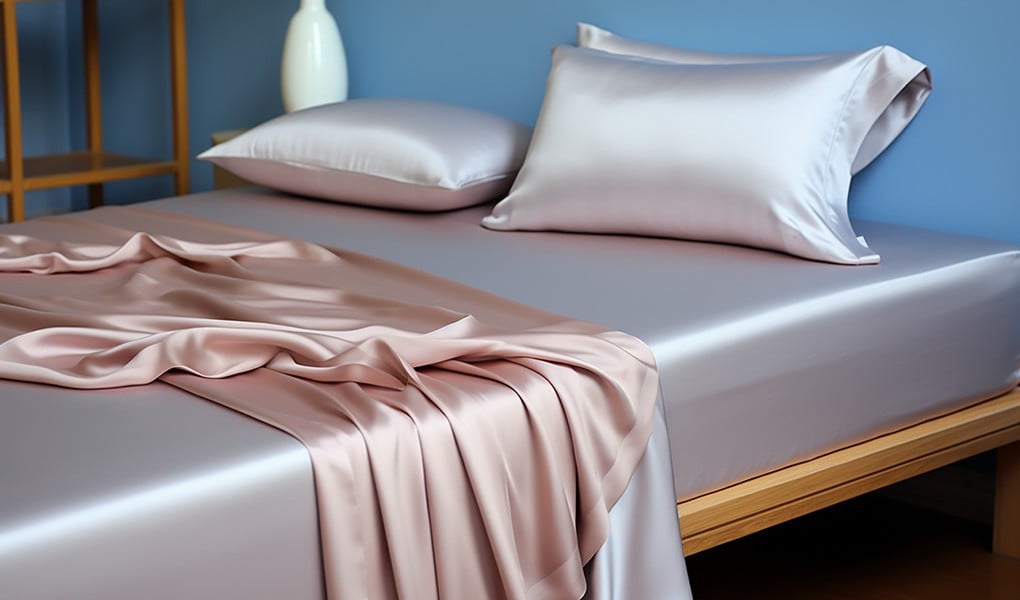The appearance of pilling, those small fabric balls or fuzz, on silk fitted sheets might raise concerns about the silk’s quality. However, it’s important to debunk the notion that pilling automatically implies inferior silk quality. Pilling is a widespread phenomenon caused by fiber friction and doesn’t necessarily reflect the overall quality of the silk fitted sheets.
Understanding Pilling:
Pilling arises when loose fibers on the fabric’s surface become entangled and form small balls or pills. This occurrence is typically triggered by friction, abrasion, or mechanical stress, especially in areas that experience regular wear and tear. These loose fibers intertwine, resulting in the distinctive textured appearance characteristic of pilling.

The Relationship Between Silk and Pilling:
Silk, renowned for its luxurious softness and natural sheen, is not immune to pilling, similar to many other fabrics. However, the presence of pilling doesn’t automatically signal subpar silk quality. It’s essential to differentiate between pilling and the overall silk quality utilized in the creation of fitted sheets. Even high-quality silk can experience pilling due to the fine nature of silk fibers rubbing against each other or against other surfaces.
Common Causes of Pilling:
- Friction: As previously mentioned, friction is the primary cause of pilling. Everyday activities like moving around in bed can lead to friction between the body and the silk fitted sheets, potentially resulting in pilling.
- Washing and Drying: Harsh washing and drying methods, particularly using strong detergents and high temperatures, can weaken silk fibers and contribute to pilling.
- Blended Fabrics: Blending silk with other materials may increase the likelihood of pilling. Different fibers possess varying levels of abrasion resistance, potentially leading to uneven wear and pilling.
Prevention and Maintenance:
While pilling is a natural occurrence, there are steps to minimize its impact on silk fitted sheets:
- Gentle Care: Adhere to the manufacturer’s care instructions for washing and drying silk fitted sheets. Using a delicate cycle and mild detergents can help preserve the fabric’s integrity.
- Reduce Friction: Minimize friction by avoiding contact with rough surfaces and ensuring smooth movements on the sheets.
- Use of Fabric Shavers: Fabric shavers or depillers can be employed to gently remove pills from the surface of silk fitted sheets without causing damage.
In conclusion, the presence of pilling on silk fitted sheets shouldn’t automatically lead to doubts about silk quality. Pilling is a common occurrence resulting from friction and is not unique to silk textiles. Acknowledging that pilling is a natural aspect of textile wear and tear empowers consumers to make informed decisions when choosing silk bedding. Remember that the overall quality of silk fitted sheets encompasses factors beyond pilling, such as fiber quality, weaving techniques, and production processes.

